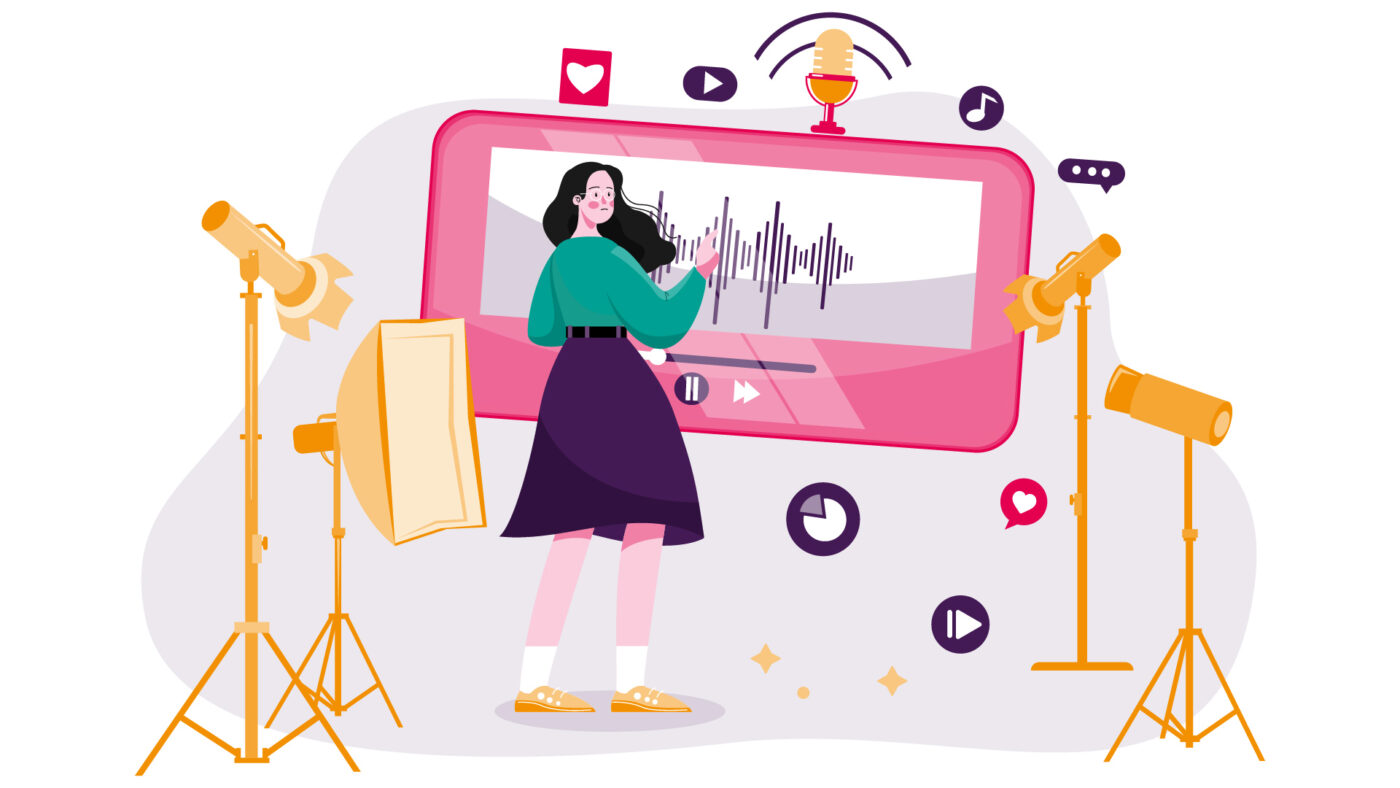
Last August, we summarised the key video content trends for year 2022. We ended this post with a little glimpse into the future – about user-generated content and what it means. We did not expect the future to come already. This pace is a little daunting, but you can’t stop development and innovation. So what video content trends are really on top this year?

Vertical videos are becoming increasingly popular
We are all used to using the phone in the upright position because it is more comfortable. People will always look for a way to consume the content they are interested in in the most efficient way, with the least effort. Social network owners see this and are already making a number of improvements to their platforms:
- TikTok, a fast-growing platform, is designed specifically for vertical video
- YouTube is actively promoting its tool for creating vertical videos (shorts)
- Instagram is actively introducing algorithms and encouraging users to create, share and follow vertical video content
- LinkedIn recommends vertical videos because they reach more people

user-generated content based on personal experience, authenticity and community
Problems will never go away and people will always look for ways to solve them. Until now, people have been quite trusting of the solutions offered by companies. Today, less and less. The best advertising has always been word of mouth, but it only works between people who trust each other and have similar interests. Such peer-to-peer communication is perceived as advice, help and not advertising, because it is based on personal experience and is authentic.

Business-generated content focused on audience engagement
Companies do not want to be left behind and are trying to learn the same channels and methods that are working well elsewhere. They are looking for ways to engage audiences more and more, to connect with them even more closely. Companies are trying to become your close friend. Someone who respects your interests and cares about your beliefs. Until AI takes over the world, every company is made up of people just like you – with their own personalities, interests, ambitions and beliefs.
While some companies have been building communities around their products and services (Starbucks, Apple, Red Bull, Harley Davidson, IKEA, etc.), others are starting to do so now, following global trends, attracting influencers and actively engaging users.

Live broadcasts remain increasingly popular
Live broadcasts have always been popular with audiences because they create a sense of presence. Live television broadcasts often allowed the audience to interact with people on the other side of the screen, thus encouraging greater audience engagement. With the development of the internet and mobile devices, live broadcasts have become even more interactive and efficient. We are no longer tied to where the TV is. We can connect to the live stream with our phones anywhere, anytime, as long as we have internet access.
If live broadcasts with the purpose of selling have existed on television since the 1970s, then May 2016 was a turning point in modern sales, as the first e-commerce live broadcast platform – Taobao Live – appeared. It both created a completely new way for the customer to interact with the seller and made it possible to buy instantly online. This idea laid the foundations for influencer selling as we see it today, and it is only growing in popularity.

The role of video content in SEO optimisation
Only recently, you went to a search engine – Google, Bing, Yandex, etc. – to find the information you needed. How are you doing today? Aren’t you also looking for information on YouTube, the world’s second largest search engine, where you can find a visual answer to your question?
Humans perceive visual content 60 000 times faster than text. You visually perceive 90% of the information, on average remember 65% of what you see and only 10% of what you read.
Originally, SEO focused exclusively on text, but this has changed rapidly in recent years. Creating and embedding video content on your website improves its quality, traffic and search engine rankings. You may have noticed that Google has been including video results in its search engine for some time.
Admittedly, Gen Z uses TikTok as a visual search engine more than Google. TikTok’s owners see this very well, and are introducing ever more precise search algorithms to better compete with Google.

Video processing on your phone and artificial intelligence
As the volume of video content increases, we need to be able to produce it regularly, easily and quickly. Various video editing applications that can be used on your phone and are easy to understand come to the rescue. No more professional software, hardware or expertise required.
The next step in video processing is the use of artificial intelligence. Yes, it is in its infancy, but huge sums are already being invested in its development. AI will allow you to create A/B tests, generate different video options, manipulate video content, etc.

This year promises to be very interesting, with two major milestones: the importance of vertical video and the use of artificial intelligence. We look forward to seeing where these two trends develop and how they interact.
Did you find the article useful and would you like to receive similar content in the future? Sign up for our newsletter in your email or follow us on the channel that suits you best – LinkedIn, Facebook, Instagram, YouTube